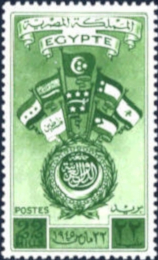
Indian postal systems for efficient military and governmental communications had developed long before the arrival of Europeans. When the Portuguese, Dutch, French, Danish and British conquered the Marathas who had already defeated the Mughals, their postal systems existed alongside those of many somewhat independent states. The British East India Company gradually annexed the other powers on the sub-continent and brought into existence a British administrative system over most of modern-day India, with a need to establish and maintain both official and commercial mail systems.
This is a survey of the postage stamps and postal history of Afghanistan.

This is an overview of the postage stamps and postal history of Australia.
Postal codes were introduced in South Africa on 8 October 1973, with the introduction of automated sorting.

India Post is an Indian government-operated postal system in India, and is the trade name of the Department of Post under the Ministry of Communications. Generally known as the Post Office, it is the most widely distributed postal system in the world. Warren Hastings had taken initiative under East India Company to start the Postal Service in the country in 1766. It was initially established under the name "Company Mail". It was later modified into a service under the Crown in 1854 by Lord Dalhousie. Dalhousie introduced uniform postage rates and helped to pass the India Post Office Act 1854 which significantly improved upon 1837 Post Office act which had introduced regular post offices in India. It created the position Director General of Post for the whole country.

Otjimbingwe is a settlement in the Erongo Region of central Namibia. Otjimbingwe has approximately 8,000 inhabitants and belongs to the Karibib electoral constituency.

The postage stamps and postal history of Israel is a survey of the postage stamps issued by the state of Israel, and its postal history, since independence was proclaimed on May 14, 1948. The first postage stamps were issued two days later on May 16, 1948. Pre-1948 postal history is discussed in postage stamps and postal history of Palestine.
The postage stamps and postal history of Palestine emerges from its geographic location as a crossroads amidst the empires of the ancient Near East, the Levant and the Middle East. Postal services in the region were first established in the Bronze Age, during the rule of Sargon of Akkad, and successive empires have established and operated a number of different postal systems over the millennia.

The Palestinian National Authority began in 1994 to issue stamps and operate postal services as authorized by the Oslo Accords.

This is a survey of the postage stamps and postal history of Germany and philatelically related areas. The main modern providers of service were the Reichspost (1871–1945), the Deutsche Post under Allied control (1945–1949), the Deutsche Post of the GDR (1949–1990), the Deutsche Bundespost (1949–1995), along with the Deutsche Bundespost Berlin (1949–1990), and are now the Deutsche Post AG.

This is a survey of postage stamps and postal history of the German colonies and part of the postage stamps and postal history of Germany, as well as those of the individual countries and territories concerned.

NamPost is the national postal service of Namibia. It currently has 743 employees and reserves of N$ 2.51 million. The current CEO of NamPost is Festus Hangula.

German South West Africa was a German colony in Africa, established in 1884 with the protection of the area around Lüderitz and abandoned during World War I, when the area was taken over by the British.

The South West African Zwillinge 0-6-0T of 1898 was a narrow gauge steam locomotive from the German South West Africa era.

This is a survey of the postage stamps and postal history of Ghana, known as the Gold Coast before independence.

This is a survey of the postage stamps and postal history of Egypt.

This is a survey of the postage stamps and postal history of South Africa.

Postage stamps were issued in the South African-administered colony of South West Africa from 1914 to 1989.

The Republic of South Sudan became independent on 9 July 2011 from Sudan and issued its first stamps on 13 July 2011. Only almost three months later, on 4 October 2011, did South Sudan become a member of the Universal Postal Union (UPU). Before independence, South Sudan used stamps issued by Sudan. The Directorate of Postal Services of the Ministry of Telecommunication and Postal Services is responsible for postal affairs in South Sudan.
After 28 years without a postal code system in Namibia, the national postal service provider NamPost introduced new postal codes in December 2018.
















